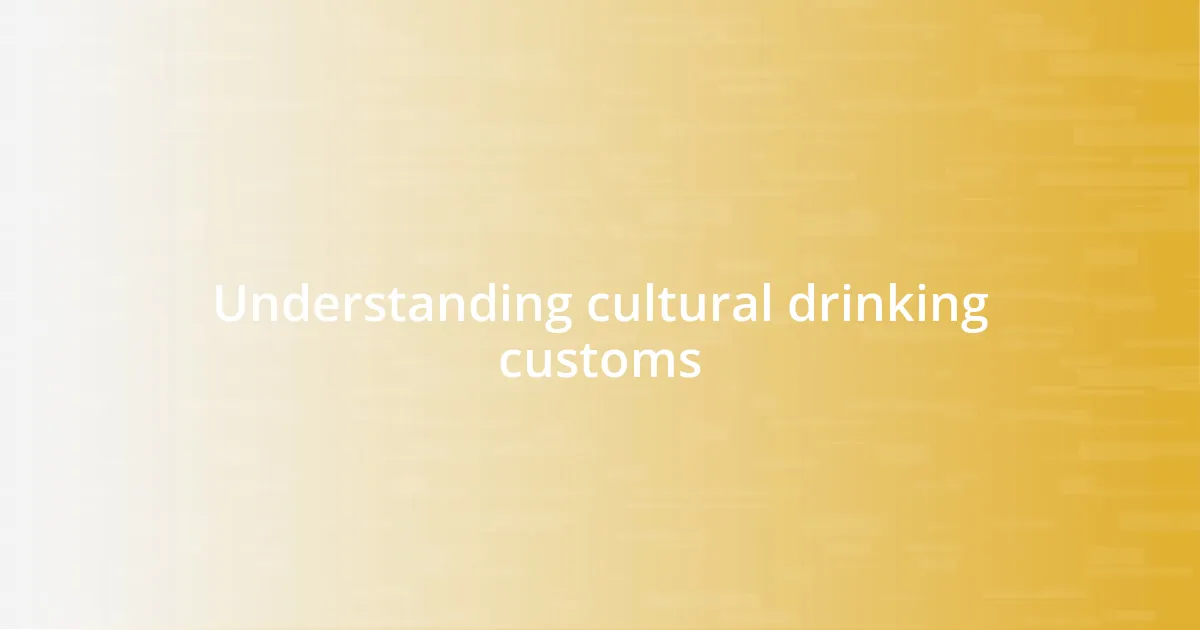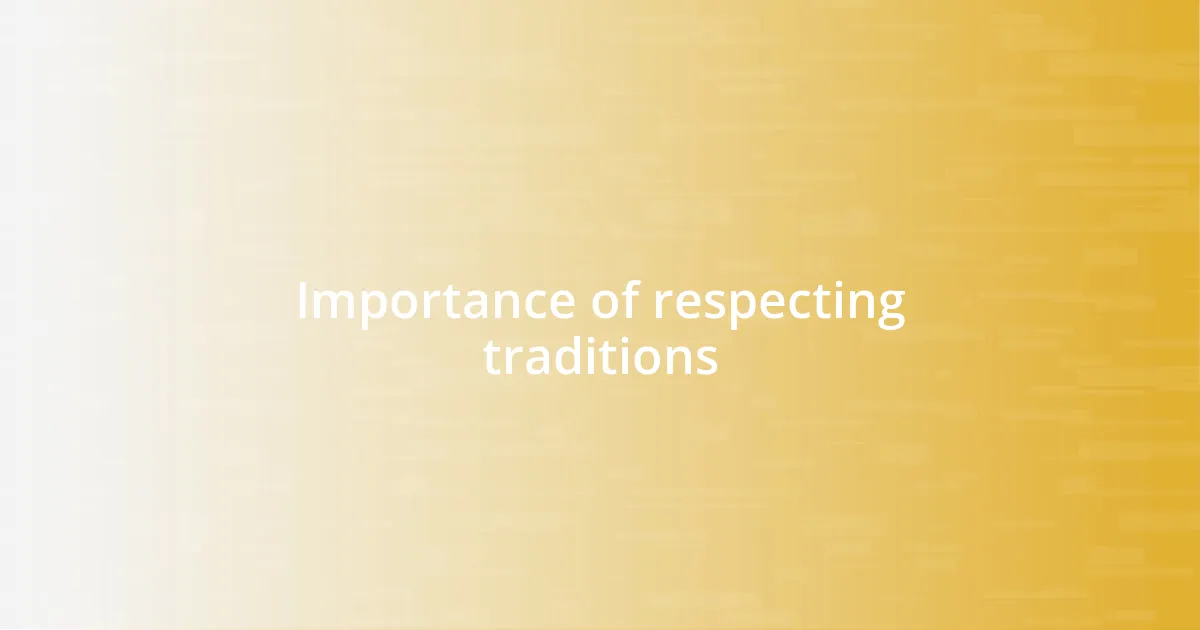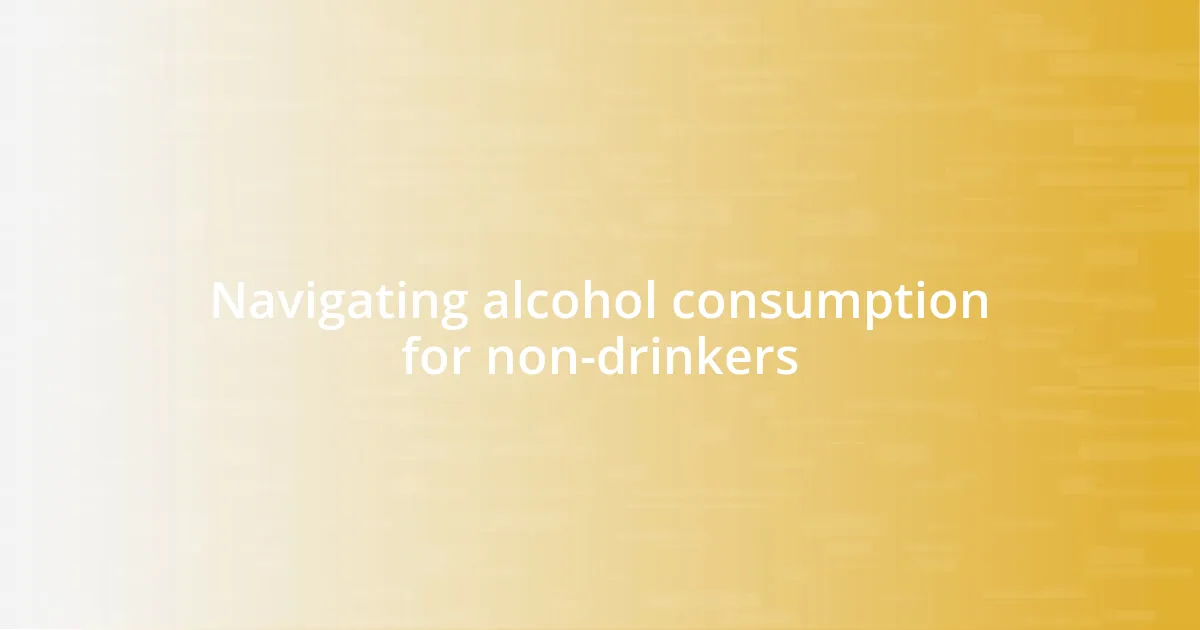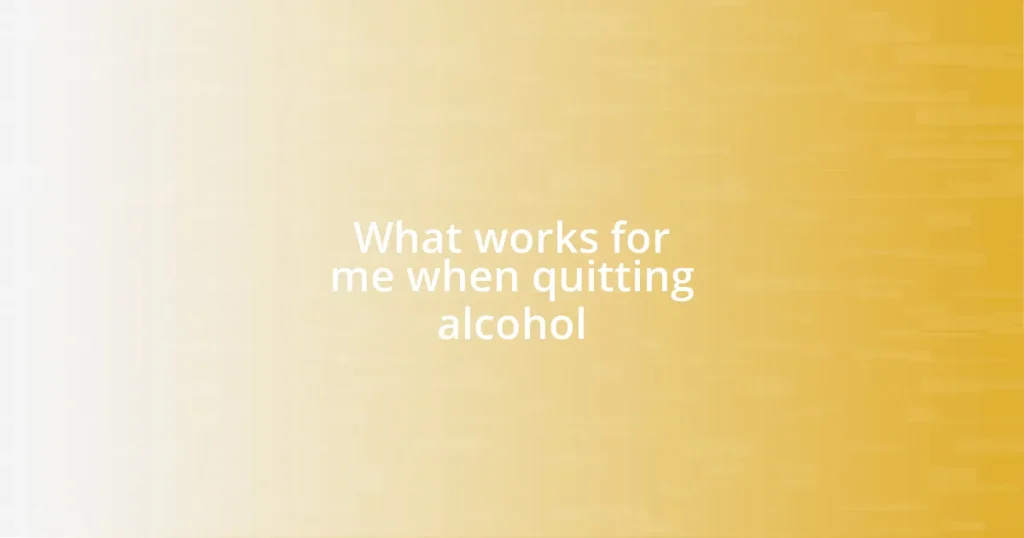Key takeaways:
- Cultural drinking customs are pivotal for connection and celebration, reflecting community values and history.
- Respecting drinking traditions enhances social interactions, fosters inclusivity, and deepens cultural appreciation.
- Avoiding faux pas through understanding local etiquette promotes better relationships and enriches experiences.
- Non-drinkers can navigate social events by embracing local alternatives, facilitating connections without needing alcohol.

Understanding cultural drinking customs
Cultural drinking customs can be incredibly diverse, reflecting the values and history of a community. I remember attending a wedding in a small village where the local tradition involved toasting with homemade spirits. It felt special to be included in such a personal ritual, and it made me rethink how drinking isn’t just about the beverage; it’s about connection and celebration.
Have you ever found yourself unsure about how to behave in a new drinking culture? I once faced that moment in Japan, where I learned the importance of pouring drinks for others rather than myself. The act emphasized respect and camaraderie, leaving me with a lasting appreciation for how different cultures elevate simple gestures into meaningful rituals.
Understanding these customs often requires you to embrace open-mindedness and curiosity. For instance, in some regions, the custom dictates that you never refuse a drink, as it’s seen as disrespectful. I found this out the hard way during a dinner in Eastern Europe, but it became an enriching experience, highlighting how vital it is to engage with local practices and values.

Importance of respecting traditions
Respecting cultural traditions is essential for fostering understanding and creating meaningful connections with others. I recall a memorable evening at a South American fiesta, where the ritual of passing around a shared drink brought everyone together. It wasn’t just about tasting the beverage; it was a symbol of trust and community that I hadn’t fully grasped until I was a part of it. The experience taught me that respecting these customs not only honors the culture but also enriches our experiences.
- Engaging respectfully with traditions builds trust and rapport.
- It enhances social interactions, making gatherings more enjoyable.
- Understanding rituals deepens cultural appreciation and awareness.
- Participating in local customs shows a genuine interest in the community’s values.
- It fosters inclusivity, making everyone feel welcome and valued.

Avoiding cultural drinking faux pas
Cultural drinking faux pas can often be subtle yet highly impactful. I once attended a business reception in Germany and learned the hard way about the significance of eye contact when clinking glasses. Failing to maintain eye contact while toasting was seen as bad manners, leaving me slightly embarrassed but also more aware of how attentive gestures are vital in different cultures.
Another key aspect to avoid faux pas is understanding local drinking etiquette. In some Asian cultures, it’s customary to pour drinks for others and not yourself. I vividly remember being corrected in a lively bar in Korea when I instinctively reached for my own glass. It offered a delightful opportunity to connect with locals, learning firsthand how these practices foster deeper relationships.
Lastly, knowledge about drink limitations can save you from uncomfortable situations. In Scotland, I quickly discovered that finishing your drink too fast can signal a lack of respect. When I took my time during a whiskey tasting, I felt welcomed as people began to share stories about their favorite distilleries and personal experiences, transforming a simple drink into an enriching dialogue.
| Culture | Faux Pas |
|---|---|
| Germany | Not making eye contact during a toast |
| Korea | Poor pouring etiquette; pour for others, not yourself |
| Scotland | Finishing drinks too quickly |

Navigating alcohol consumption for non-drinkers
When navigating social situations as a non-drinker, I’ve found that honesty is the best policy. At a lively gathering in Italy, I simply expressed that I preferred non-alcoholic options. Surprisingly, this led to enriching conversations about local soft drinks and their unique flavors, allowing me to bond with everyone over something different yet equally enjoyable.
I remember sitting at a wedding in Japan where sake was flowing freely. Instead of feeling left out, I embraced the moment with a non-alcoholic beverage in hand, clinking my glass with others. To my delight, this sparked curiosity among guests, turning it into an engaging dialogue about my choice. It made me wonder, how many other non-drinkers miss out on such shared moments just because they shy away from participating?
Additionally, it’s crucial to explore local alternatives when attending cultural events. While visiting a Moroccan festival, I discovered an exquisite mint tea ritual that substituted for alcohol beautifully. Sharing this experience with friends not only highlighted the beverage’s cultural significance but also showcased how non-drinkers can be integral to a festive atmosphere without sacrificing enjoyment or connection. How often do we realize that connection goes beyond what’s in the glass?

Building connections through shared experiences
Building connections through shared experiences often transcends the act of drinking itself. I remember a vibrant rooftop party in Spain where everyone gathered to share tapas and laughter over drinks. As the sangria flowed, I found myself drawn into a circle of new friends, exchanging stories about our cultural backgrounds. It was in that moment that I realized the drink was merely a backdrop; the real connection blossomed through genuine conversations about our lives and experiences.
One evening in Brazil, I had the pleasure of joining a local festival. As strangers turned to friends, we engaged in a traditional toast, where everyone took turns sharing what they were grateful for. It wasn’t just about the cachaça; it was about vulnerability and openness. This ritual turned an ordinary gathering into a memorable celebration of life and friendship. It made me ponder: what if we leaned into these traditions more often to foster connection in our own lives?
In my travels, I’ve seen how a simple drink can serve as a bridge between cultures. I once attended a family gathering in Mexico, where the sharing of mezcal turned into heartfelt stories passed down through generations. I found joy not just in the warmth of the drink but in the laughter and tears that came with each tale. Connecting through shared experiences enhances our understanding of each other, proving that the essence of community lies in these collective moments. Isn’t it amazing how a drink can unite us, even in our differences?















